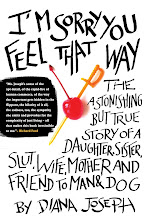To analyze a story for craft means paying attention to how the story is told, how its form reinforces its content. If writing is a series of choices, then what are the effects of these particular choices? If there’s an infinite number of ways to say something, then why is the writer saying it in this particular way? Why use first person instead of third person limited? What’s the effect of present tense over past? What are the story’s significant images and how do they create meaning?
A successful analysis will isolate a particular craft of craft – point of view, for example, or imagery, setting, tone, characterization, etc. – then discuss how it works to create unity, a singular effect, a vivid and continuous dream.
To write a craft anaylsis:
1. TYPE the passage that best illustrates the term you plan to discuss.
2. DEFINE the craft term you plan to discuss. If you say you’re talking about style, what specifically do you mean? If you say your analysis will cover a concept like theme (OR extended metaphor OR pacing OR the writer’s use of time), make sure you’ve first explained how, exactly, you understand that concept.
3. Make CLAIMS about the text: For example: Russell Bank’s use of third person in “Sarah Cole” operates as a way for the first person narrator to distance himself from events he’s ashamed of OR the short choppy sentences and emphasis on sensory detail in climactic moment of Michael Cunningham’s story “White Angel” heightens the dramatic tension and keeps the moment from lapsing into melodrama.
4. PROVIDE QUOTES from the passage that ILLUSTRATE/SHOW what you’re talking about.
5. EXPLAIN how and why the quotes you’ve selected illustrate your claims.
Subscribe to:
Post Comments (Atom)
.jpg)
No comments:
Post a Comment